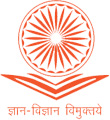Impacts of Dyeing Effluent on Surface Water Around Cottage Industrial Areas
1
Water Research Lab,
Institute of Environmental Science,
University of Rajshahi,
Bangladesh
2
Department of Civil Engineering,
Prime University,
Dhaka,
Bangladesh
Corresponding author Email: mgmostafa@ru.ac.bd
DOI: http://dx.doi.org/10.12944/CWE.20.1.17
Copy the following to cite this article:
Islam M. Z, Hasan M. R, Mostafa M. G. Impacts of Dyeing Effluent on Surface Water Around Cottage Industrial Areas. Curr World Environ 2025;20(1). DOI:http://dx.doi.org/10.12944/CWE.20.1.17
Copy the following to cite this URL:
Islam M. Z, Hasan M. R, Mostafa M. G. Impacts of Dyeing Effluent on Surface Water Around Cottage Industrial Areas. Curr World Environ 2025;20(1).







